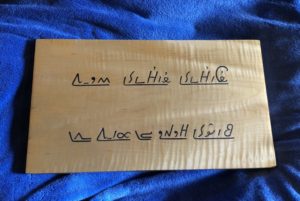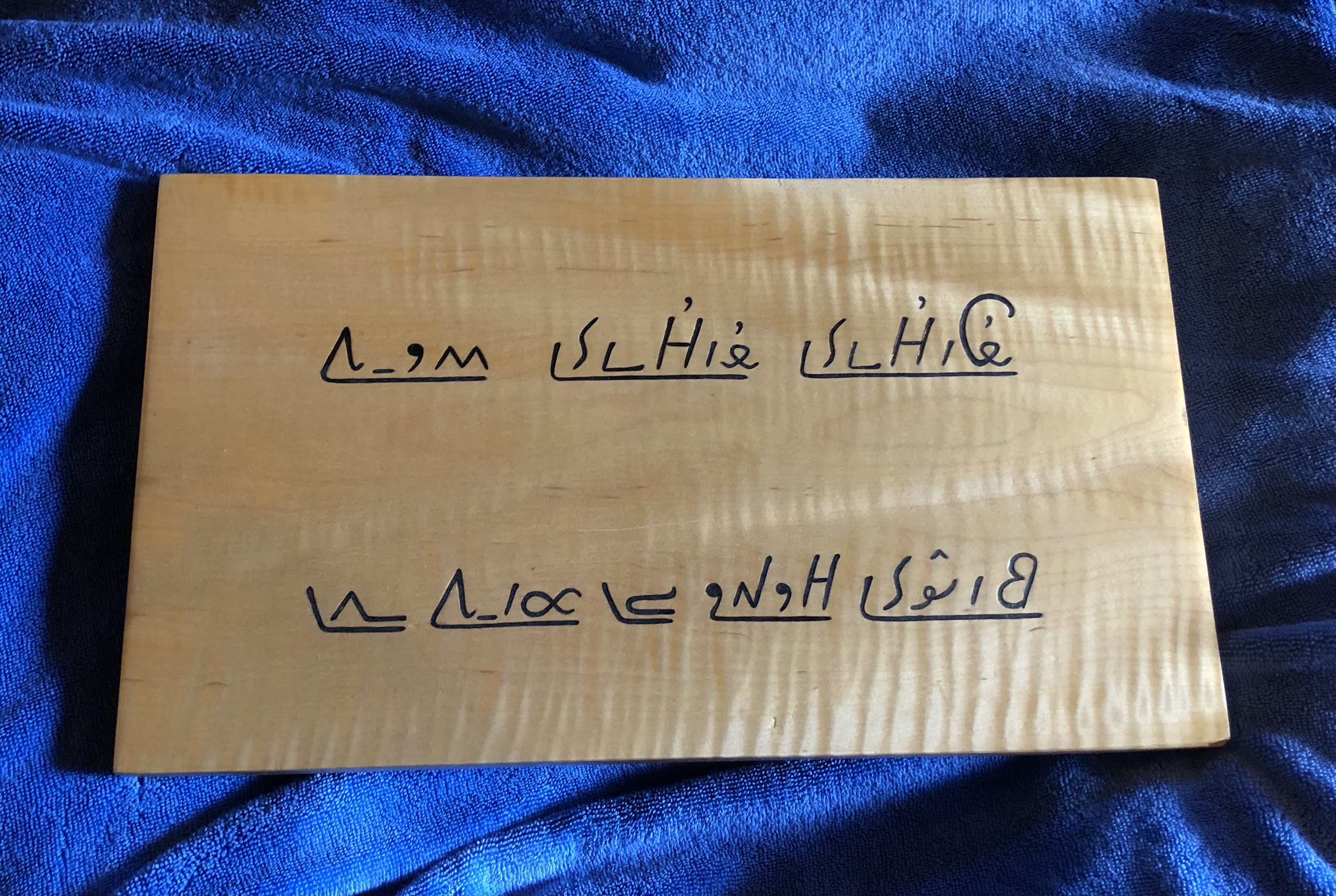Cutting the Thread
 We’re used to reading the sad news that the last speaker of a language has died, and with them we lose not only that language’s vocabulary but its subtler infrastructure: its syntax, its tones, its use of tenses and sequences that may never have been recorded, or documented.
We’re used to reading the sad news that the last speaker of a language has died, and with them we lose not only that language’s vocabulary but its subtler infrastructure: its syntax, its tones, its use of tenses and sequences that may never have been recorded, or documented.
The world of scripts is just as vulnerable, though sometimes in different ways. In particular, emerging scripts are fragile: they may be the life’s work of a single person, who may not only have done the extraordinarily hard work of concocting a symbol system for their spoken language, but may have been the script’s primary and perhaps even its only advocate and teacher.
With this in mind, I pass on with regret the following update from Charles Riley of the Yale library system, an expert on indigenous African scripts. He reports:
October 1, El Hadji Assane Faye, inventor of the Garay script, passed away in Dakar after bouts with illness. His work is continued by his son, Souleiman.
September 27, the Sultan of Foumban, Ibrahim Mbombo Njoya, passed away at 83. The grandson of Sultan Ibrahim Jyoya who invented the Bamum script, he had supported the teaching of the script at many levels.
September 20, Rev. J. Peter Gorwor passed away in Liberia. He had translated the first article of the Universal Declaration of Human Rights into Bassa using the Bassa Vah script. It was his version, in fact, that I carved for my first Endangered Alphabets exhibition of carvings.
Sept. 16, Alexandra Vydrina, a Russian linguist of Mande languages, died in Norway at the age of 33. She had mostly researched Kakabe, but also wrote a review of a Vai dictionary by Raimund Kastenholz.
Can’t help thinking of the Fates, spinning and then cutting the thread—of life, of the transmission of language and script.
This post is sponsored by our friends at Typotheque and Rosetta.



